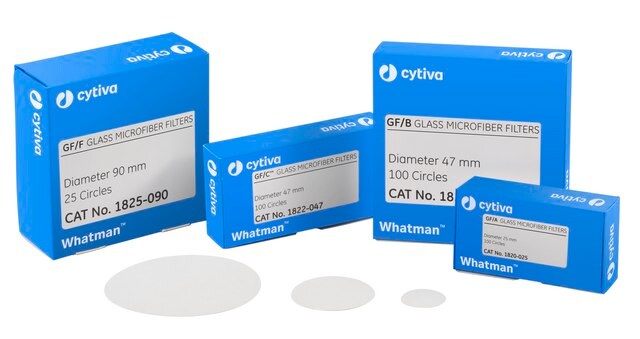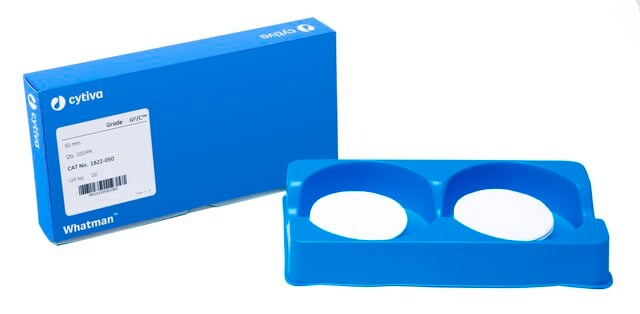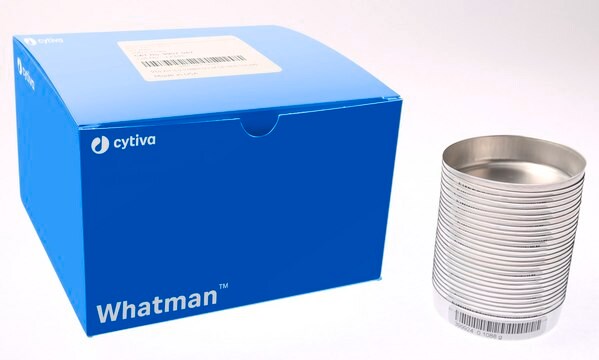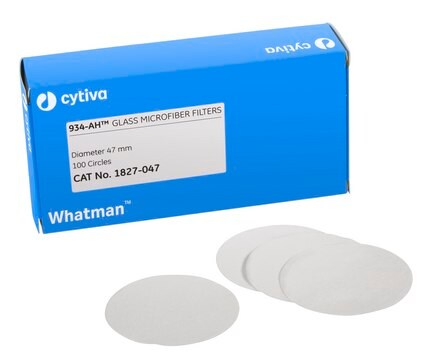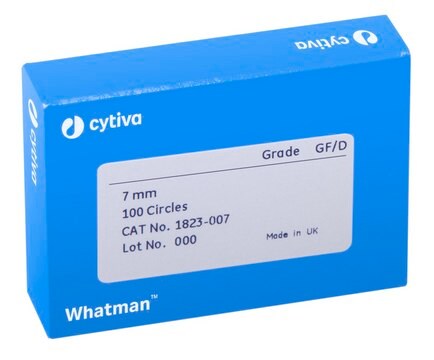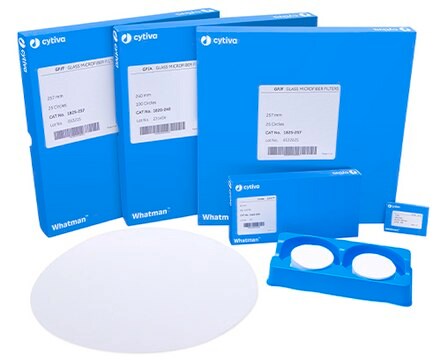WHA2822-047
Whatman® glass microfiber filters, Grade GF/C RTU
pre-rinsed and dried, diam. (4.7 cm), pack of 100 ea
Sinónimos:
Whatman Microfiber Filters
About This Item
Productos recomendados
material
borosilicate glass
feature
Binder Free
Nominal Air Flow Rate: 6.7 s/100 ml/in²
Typical water flow rate: 105 ml/min
pre-rinsed and dried
packaging
pack of 100 ea
parameter
<550 °C max. temp.
diam.
(4.7 cm)
thickness
(260 μm)
¿Está buscando productos similares? Visita Guía de comparación de productos
General description
Glass microfiber filters for total suspended solids
Whatman binder-free glass microfiber filter grade GF/C from Cytiva is widely used as a total suspended solids filter for applications testing both potable water and waste water.
The GF/C RTU line, part of the Whatman GF/C filter paper family, is pre-treated with washing, drying, cooling (in a desiccator), and weighing steps aligned to the requirements of EN 872—the European norm for testing suspended solids in water. The Cytiva quality organization certifies that these filter paper have weight loss of less than 0.017 mg/cm2 after preparation, as required by the standard. Each ready-to-use glass filter paper is placed in an individually barcoded aluminium pan that notes the filter paper weight. The barcode can be used to access a Cytiva certification of the filter weight from our website. Each box contains an additional box ID and barcode that can be used to download the weights of all 100 pans in that box.
Features and Benefits
- Available in a range of sizes,
- GF/C grade microfiber filters are widely used for cell harvesting, liquid scintillation counting, and binding assays where more loading capacity is required.
- They are highly suitable for use in applications involving air filtration and for gravimetric analysis of volatile materials where ignition is involved.
- GF/C grade RTU microfiber filters can be used for dissolved and suspended solids and are available in packs of 100.
Legal Information
Elija entre una de las versiones más recientes:
Certificados de análisis (COA)
It looks like we've run into a problem, but you can still download Certificates of Analysis from our Documentos section.
Si necesita más asistencia, póngase en contacto con Atención al cliente
¿Ya tiene este producto?
Encuentre la documentación para los productos que ha comprado recientemente en la Biblioteca de documentos.
Los clientes también vieron
Nuestro equipo de científicos tiene experiencia en todas las áreas de investigación: Ciencias de la vida, Ciencia de los materiales, Síntesis química, Cromatografía, Analítica y muchas otras.
Póngase en contacto con el Servicio técnico